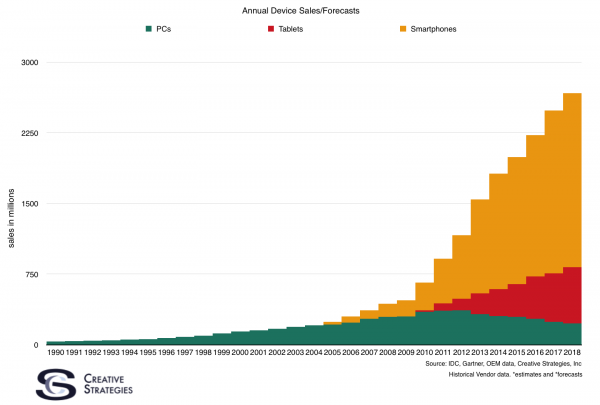Fans are happy because 19 hours of “mixed” use, with the watch mainly on standby and in typical-to-heavy use for only about 2.5 to 3.5 hours a day is actually quite generous—it means a nightly charge during a typical 8-hours of bed time is going to be more than enough. [...]
19 hours sounds very reasonable. Picture yourself looking at and interacting with your watch for 2–3 seconds at a time as you read notifications, with the occasional 10–20 seconds used to respond to something like a tweet or text message. Add in less frequent longer interactions lasting a few minutes (like making a phone call or playing a game—even though we don’t know exactly how much game play Apple will ultimately allow in watch apps) and then that 3-hour “heavy” use window looks quite generous. You wouldn’t want to stare at such a small screen for much longer each day anyway.
I've written before how the Apple Watch's battery life is a top priority. I still believe it is, but it will take a few generations before it'll be what Apple really wants it to be.
Until then, as Kit speculates, maybe 19 hours of "mixed usage" won't be that bad. I can relate to Kit's assertion that we won't be actively fiddling with our smart watches for long periods of time. As a Pebble owner, I've played with a few Pebble apps and found I fucking can't stand holding my wrist up to my face longer than 5 seconds at a time. In those longer-than-5-seconds situations, whipping out my smartphone is just way more practical.
That said, I'm curious to see how apps will mature on smartwatches. Taking a smartphone app and shrinking it down to wrist-size is not going to cut it. App developers will really have to embrace the idea of glanceable and passive user interfaces if they want to make something revolutionary.
